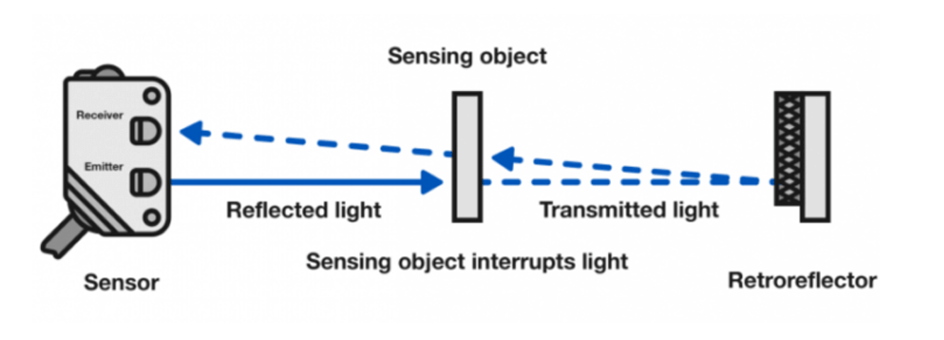1.Optical Sensors, Principles, Types, Applications,and Future Trends
Optical sensors are crucial components in modern technology, playing an essential role in various industries, from medical diagnostics to industrial automation. These sensors detect changes in light intensity, wavelength, or other optical properties to measure physical or environmental parameters. Their high accuracy, fast response time, and non-contact measurement capabilities make them indispensable for numerous applications. In this article, we will explore the working principles of optical sensors, their various types, applications across different industries, advantages and limitations, and future trends shaping the development of optical sensing technology
2.What is an Optical Sensor?
An optical sensor is a device that converts light or changes in light properties into an electrical signal. It works by detecting variations in light intensity, phase, wavelength, polarization, or interference patterns, which can be correlated with changes in environmental conditions, material properties, or physical movements.
3.How Do Optical Sensors Work?

The basic working principle of an optical sensor involves:
Light Source – A laser, LED, or other illumination sources emit light.
Interaction with the Medium – The light interacts with a target material or environment, experiencing absorption, reflection, scattering, or refraction.
Detector – A photodiode, phototransistor, or CCD/CMOS sensor detects the modified light.
Signal Processing – The detected light is converted into an electrical signal and processed to derive meaningful information.
Optical sensors can be either passive (detecting ambient light) or active (using an internal light source to probe the environment).
4.Types of Optical Sensors
Optical sensors come in various types, each optimized for specific applications. Some of the most common types include:
Photodiodes and Phototransistors
Convert light into an electrical current.
Used in light meters, optical communication, and motion detection.
Fiber Optic Sensors
Use optical fibers to transmit and detect light signals.
Suitable for remote sensing, structural monitoring, and medical applications.
Infrared (IR) Sensors
Detect infrared radiation from objects.
Used in night vision, proximity sensing, and temperature measurement.
Laser Sensors
Use coherent laser beams for precise distance, velocity, and surface measurements.
Found in LiDAR, industrial automation, and scientific instruments.
Image Sensors (CCD/CMOS)
Capture visual information as digital images.
Used in cameras, microscopes, and medical imaging.
Fluorescence Sensors
Detect fluorescence emissions from materials exposed to UV or visible light.
Applied in biochemical sensing and environmental monitoring.
Spectroscopic Sensors
Analyze the spectral composition of light to determine material composition.
Used in gas detection, food safety, and pharmaceutical analysis.
Optical Encoders
Measure rotation and position using light patterns.
Used in robotics, CNC machines, and automation systems.
5.Applications of Optical Sensors
Optical sensors are used in a vast range of industries, including:
Medical and Healthcare
Pulse Oximetry: Measures oxygen saturation in blood using red and infrared light.
Glucose Monitoring: Optical sensors in wearable devices help diabetic patients track glucose levels.
Endoscopy and Imaging: Optical sensors enable non-invasive medical diagnostics.
UV and Fluorescence Sensors: Detect biomarkers in biochemical assays.
Industrial Automation and Manufacturing
Quality Control: Optical sensors detect defects, measure thickness, and ensure precision in manufacturing.
Machine Vision: Used in robots for object recognition, alignment, and inspection.
Laser Displacement Sensors: Measure surface profiles and dimensions in real time.
Environmental Monitoring
Air Quality Sensors: Detect gases like CO₂, methane, and NO₂.
Water Quality Sensors: Measure turbidity, dissolved oxygen, and contaminants.
UV Sensors: Monitor solar radiation levels to assess environmental impact.
Automotive and Transportation
LiDAR for Autonomous Vehicles: Uses laser pulses to map surroundings in 3D.
Headlight and Rain Sensors: Adjust lighting and wipers automatically.
Infrared Sensors: Detect pedestrians and obstacles at night.
Telecommunications and Optical Communication
Fiber Optic Communication: Enables high-speed data transmission.
Optical Interconnects: Improve data processing speeds in computing systems.
Laser-based Communication: Used in satellite and deep-space communication.
Aerospace and Defense
Missile Guidance Systems: Use optical sensors for target tracking.
Space Exploration: Optical sensors monitor planetary atmospheres and detect cosmic phenomena.
Infrared Surveillance: Used for night vision and thermal imaging.
Consumer Electronics
Smartphones: Optical sensors in cameras, facial recognition, and gesture control.
Wearable Devices: Optical heart rate sensors in smartwatches and fitness trackers.
Augmented Reality (AR) & Virtual Reality (VR): Optical sensors track motion and eye movement.
6.Advantages of Optical Sensors
High Sensitivity – Can detect minute changes in light properties.
Fast Response Time – Suitable for real-time monitoring.
Non-contact Measurement – Ideal for fragile or hazardous environments.
Immunity to Electromagnetic Interference – Works in environments where electrical sensors fail.
Miniaturization and Integration – Can be embedded in compact devices.
7.Limitations of Optical Sensors
Susceptibility to Environmental Factors – Light interference, dust, and temperature fluctuations can affect accuracy.
High Cost – Advanced optical sensing systems can be expensive.
Limited Range in Certain Applications – Fiber optic sensors require direct line-of-sight for precise measurements.
Complex Signal Processing – Requires sophisticated algorithms for accurate interpretation of data.
8.Future Trends in Optical Sensors
Miniaturization and Wearable Sensors
Development of compact optical sensors for health monitoring, fitness tracking, and AR/VR applications.
Quantum Optical Sensors
Quantum technology will enhance precision measurements in medical imaging, navigation, and metrology.
AI and Machine Learning Integration
Advanced AI algorithms will improve image recognition, defect detection, and pattern analysis in industrial applications.
Flexible and Printed Optical Sensors
Printed and flexible optical sensors will enable low-cost, disposable medical diagnostics and smart packaging.
Increased Adoption in Smart Cities
Optical sensors will be essential in traffic management, pollution control, and public safety systems.
Advances in LiDAR and 3D Sensing
Future LiDAR systems for autonomous vehicles will be more compact, affordable, and accurate.
9.Conclusion
Optical sensors have transformed multiple industries by enabling precise, non-contact measurements with high accuracy and speed. Their applications range from healthcare and industrial automation to environmental monitoring and autonomous vehicles. Despite certain limitations, advancements in quantum technology, AI integration, and miniaturization are driving the future of optical sensing.
As technology continues to evolve, optical sensors will become even more vital in enhancing safety, efficiency, and automation across various fields. Whether in medical diagnostics, smart cities, or aerospace exploration, optical sensors will continue shaping the future of innovation.

